SLAY THE SPIRE IS SO GOOD!!
I have been being Silent for a while (no pun intended), and could hardly find my way getting out of the Spire! The game is too addictive. Also, I did not tell you I was juggling between a full time job and a part time job, did I?
In the post, I will try to sell you the idea of playing a seemingly ugly and boring game like Slay the Spire, and fun lessons I learned from playing it.
What is Slay the Spire?
From the game’s wiki:
Slay the Spire is a deck-building roguelike made by Mega Crit. It can be found on Steam, on GOG, or on Mega Crit’s website.
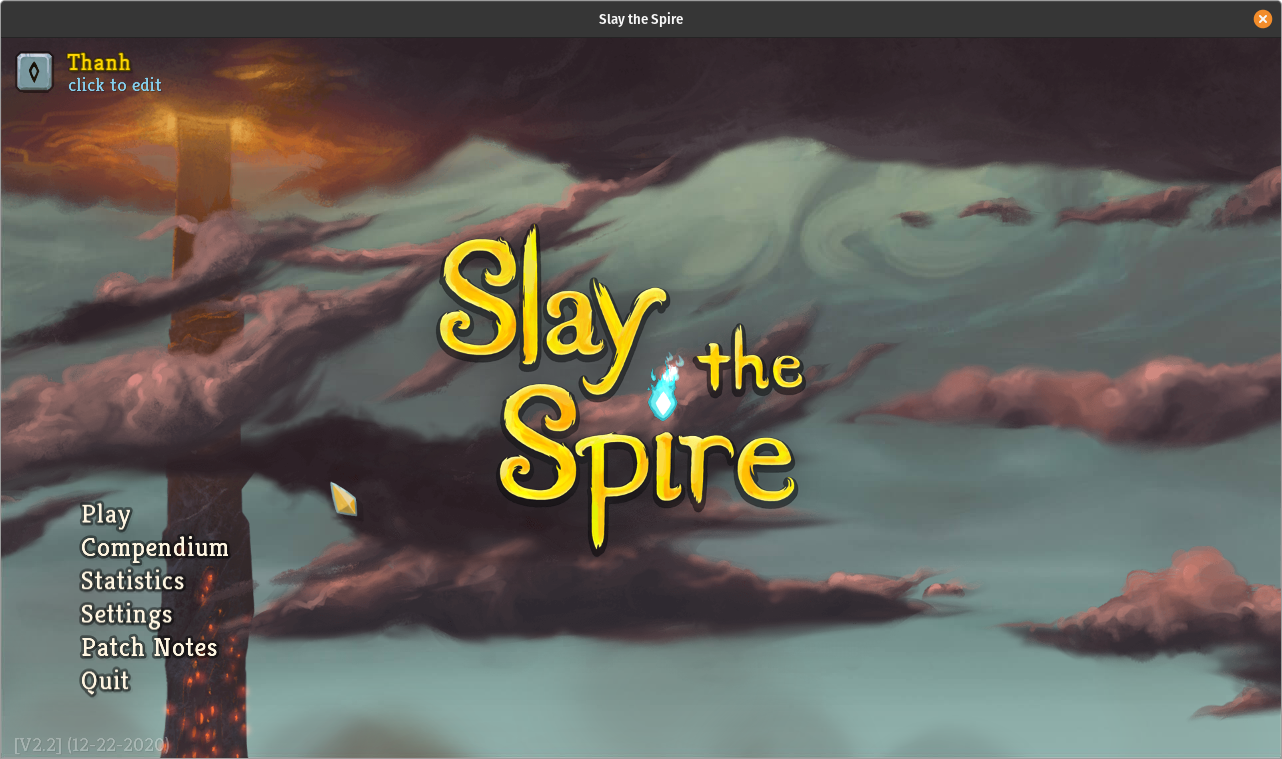
Be noticed on “deck-building”, and “roguelike”. They mean you:
- Build a deck of card
- “Run” in a same-structured, but randomly-generated map
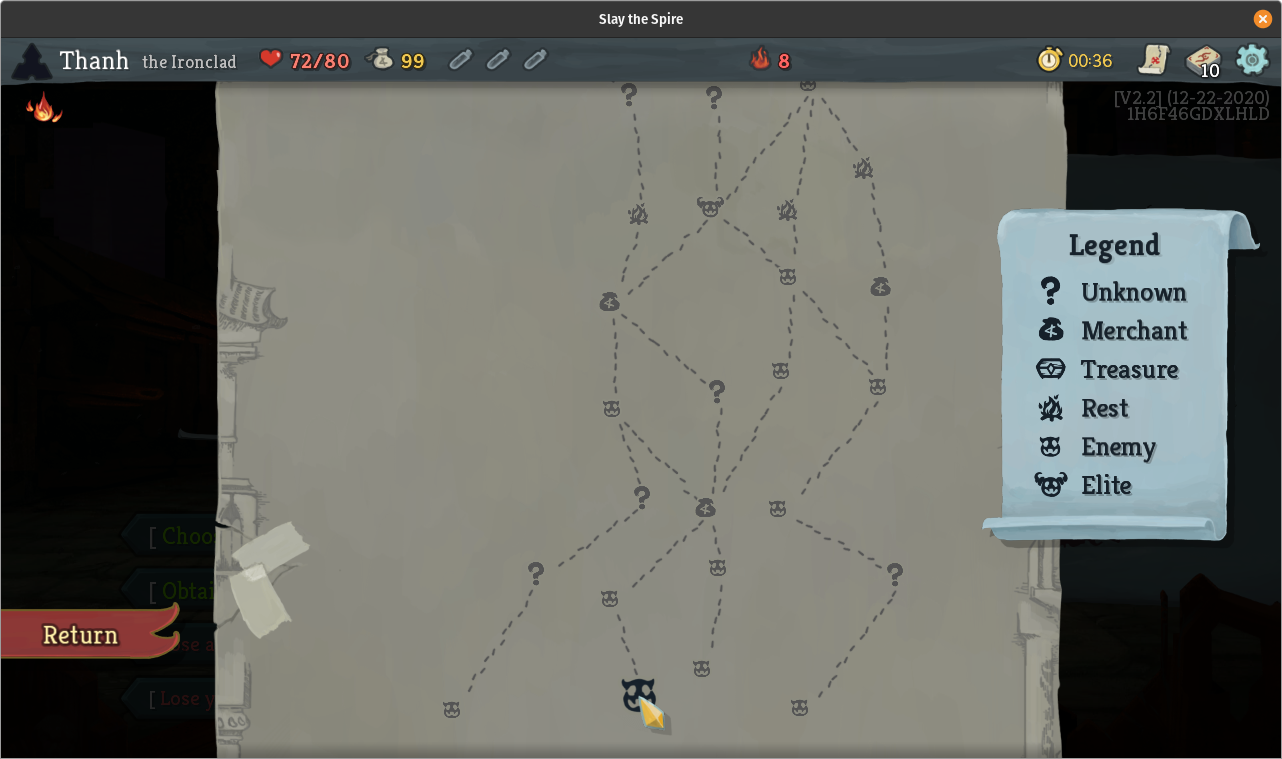
Trade-offs
In the most basic sense of Slay the Spire, you have two action: attacking, and defending (blocking). Are you willing to sacrifice little health points now, and finish the fight immediately, or keep blocking in the hope that you will finish the fight later with a smaller cost?
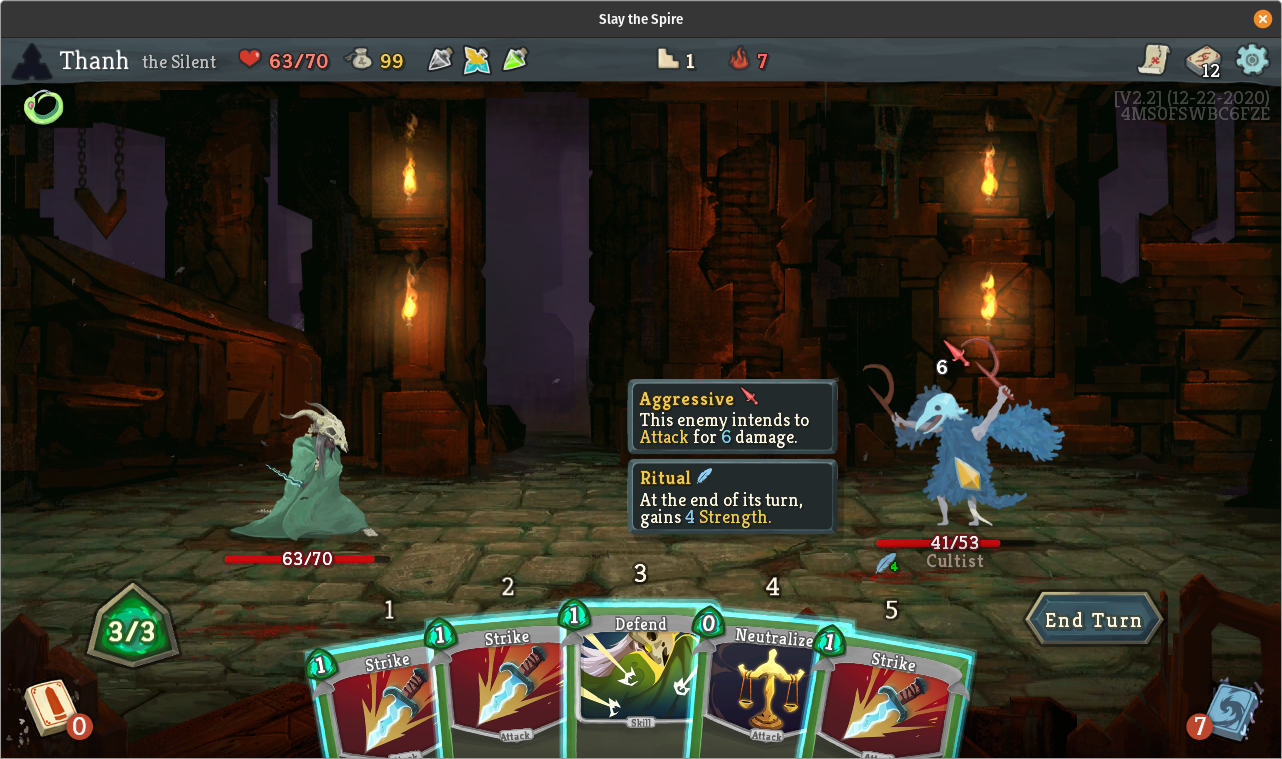
(I can attack the Cultist with all of my Strikes and then Neutralize him and takes 4 damages, but Silent has no way to heal on her own, so I should be more considerate and just spend 1 energy for blocking.)
In Slay the Spire (and in… Software Engineering, or even in life), “it depends” is heavily used. Sometimes, you have a specific “relic” that only triggers on lesser health, and it makes sense to take a small risk and manage it well.
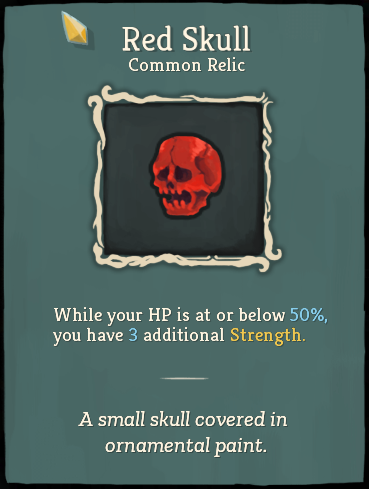
In a more specific term, it is “knowing the trade-offs”!
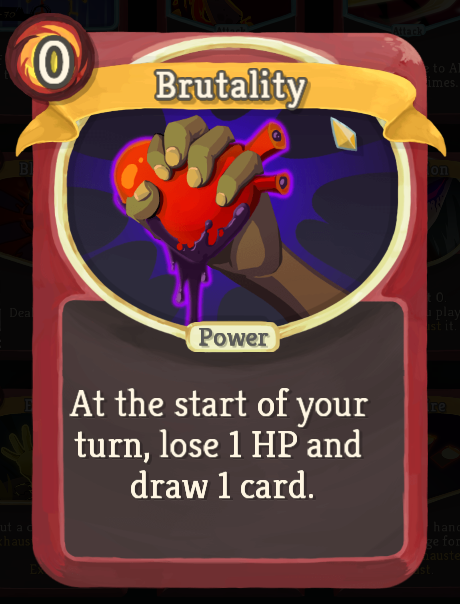 |
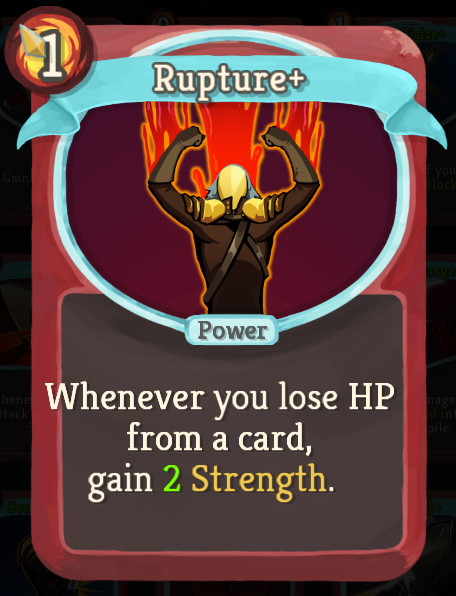 |
Brutality burns your health every turn, but pair it Rupture and we have a poor man’s version of Demon Form, not counting other cards of Ironclad that burns your health!

Decision Making
In Slay the Spire, you have battle, and after winning a battle, you can choose one of the few cards presented.
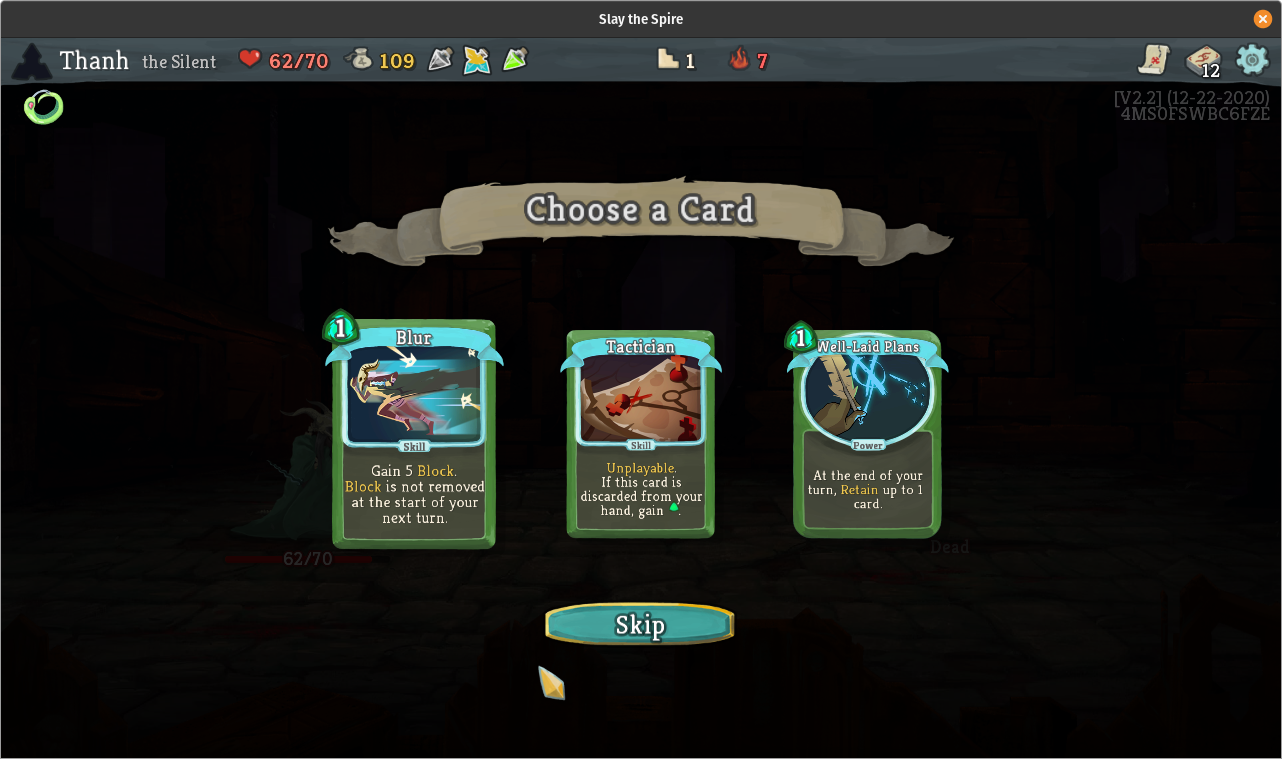
Again, we think about trade-offs for our decisions:
- Do I take a strong card that requires a specific combo and is useless right now, or
- Do I take an average card that can finish the job right now?
“It depends”, again, is the answer. A great theme of Slay the Spire is decision making under uncertanty. You have no way to tell if your decision is right.
Your beginning cards is enough when the enemies are not strong, but they are useless and get in the way of “stronger” cards later. You will have to think about removing them.
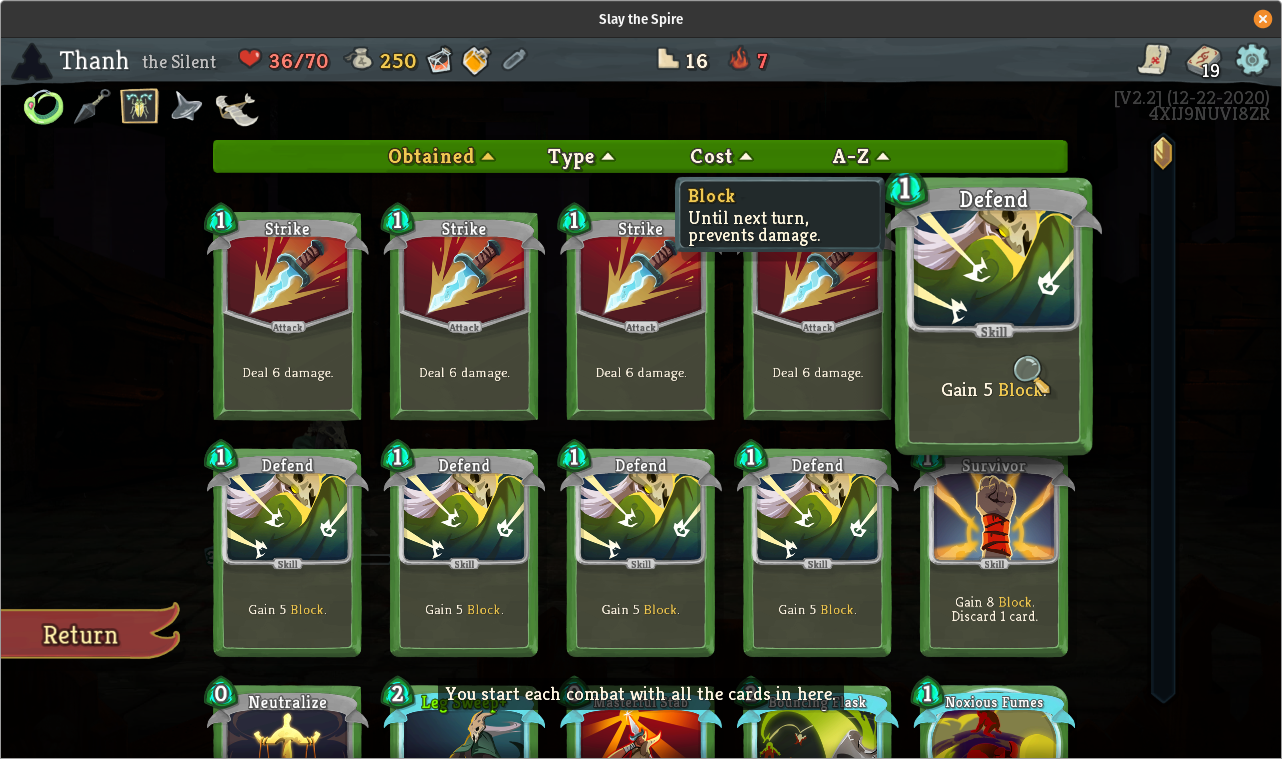
The most interesting part of Slay the Spire is setting up deck/chaining cards. The characters (Ironclad, Slient, Defect, and Watcher) have their own archetypes that can be mixed and matched, not mentioning a myriad of relics that can define the build their own.
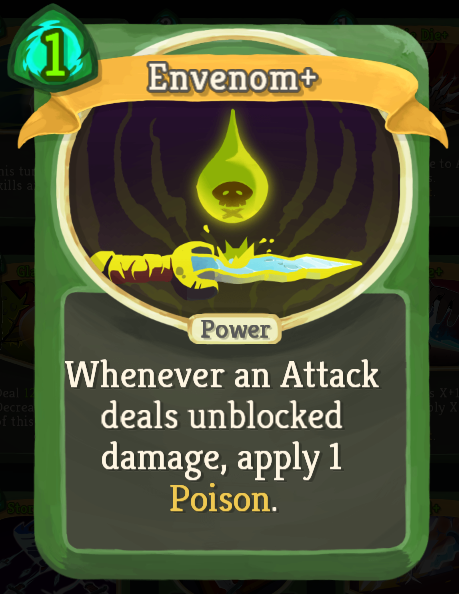 |
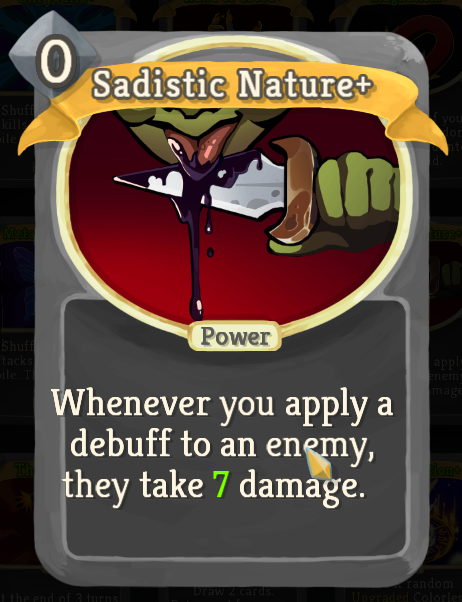 |
A pair of this mean 7 free damages for each attack, not counting multi-hit ones!
Economics
Everything in Slay the Spire then sets us up to understand economics:
[…] the study of scarcity and its implications for the use of resources, production of goods and services, growth of production and welfare over time, and a great variety of other complex issues of vital concern to society.
Everything in Slay the Spire are resources: gold, energy, “time” (before you have to face the stage bosses, and the final boss), etc. We have to make the most out of those limited resources.
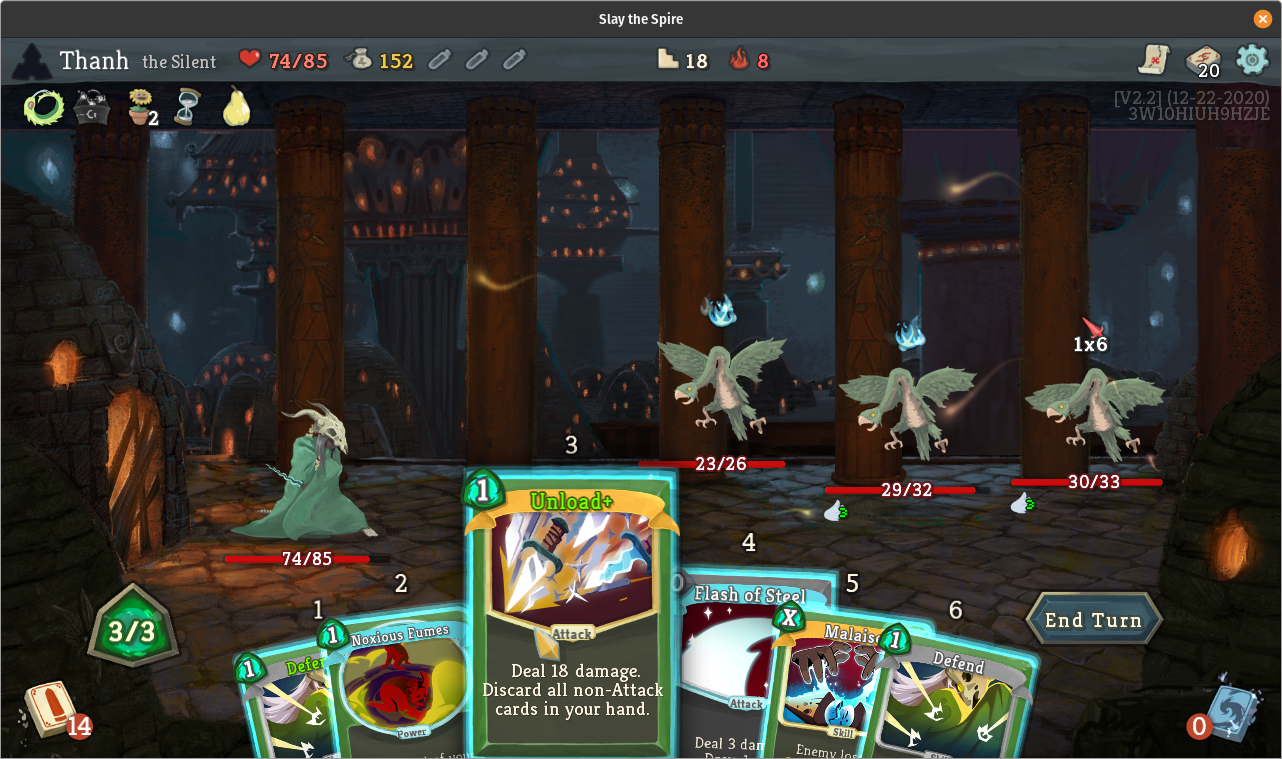
- Gold: the money of Slay the Spire, which can be spent at a shop
- Energy: how many “actions” can you do every turn
- “Time”: how many battle/event can you do and improve your current deck before facing the bosses
- …
You then understand why some combos are good in Slay the Spire: they help us save resource (and in some case, they generate resources themselves and let us go… infinity and beyond!). You do card picking, upgrading, and removing also for that same reason: how much utility would it give me?
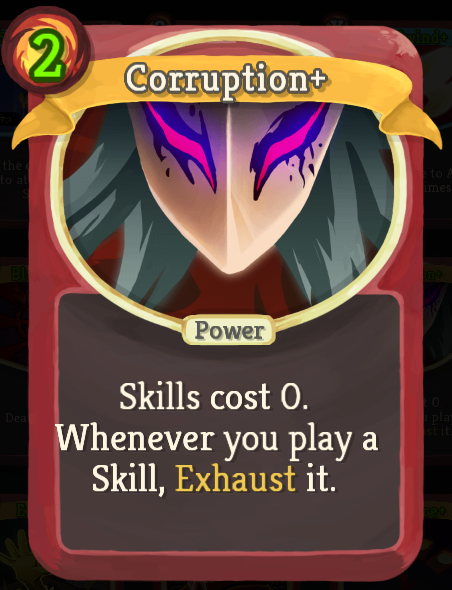 |
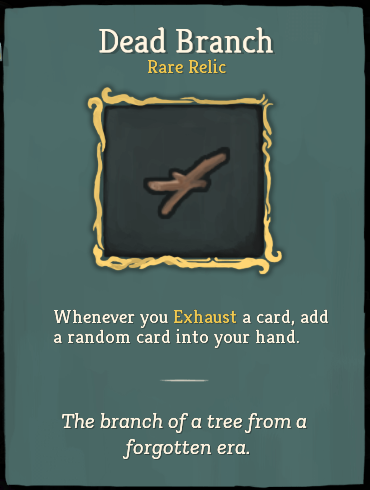 |
(name a more iconic dual; I will wait!)
Corruption make some cards become zero-costed, but “exhaust”/does not allow the card to be played again; Dead Branch replace an exhausted card with another, which allow the player to freely “spam” a lot of cards in a single turn.
A similar idea is written within Darkest Dungeon’s loading screen, with a more “bleak” view: how do you handle bad situation?
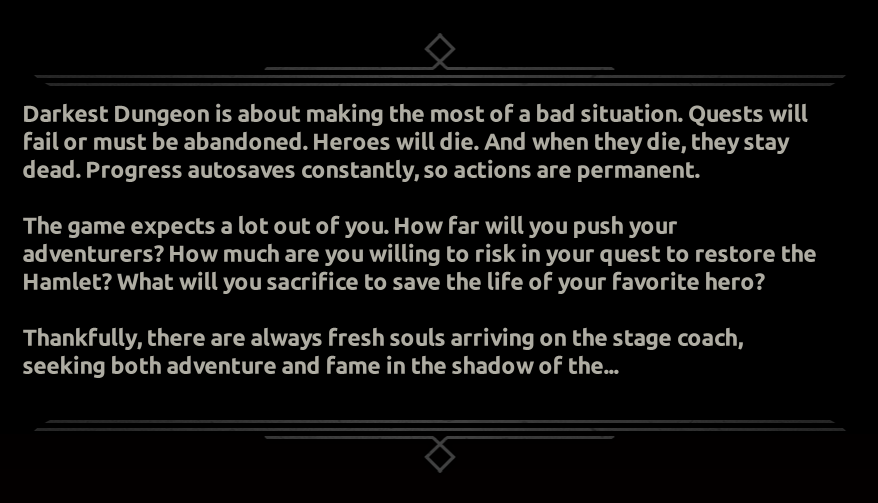
Economics of Slay the Spire and Darkest Dungeon does not different from real life: within a limited time and energy, what must you do to make it effective?
Conclusion
I wrote a post about Slay the Spire, and what I learned from it. Somehow I played the game for a while (140 hours totally), but can think that I only have explored “half of the game”, since the game has four playable characters, but I spent most of my time on two (Ironclad and Silent to be precise; I did not play Defect and Watcher a lot).
The ideas on Trade-offs, and Decision Making, and Economics are not rare in the gaming world. Combining them to be an addictive game like Slay the Spire is scarce, however!